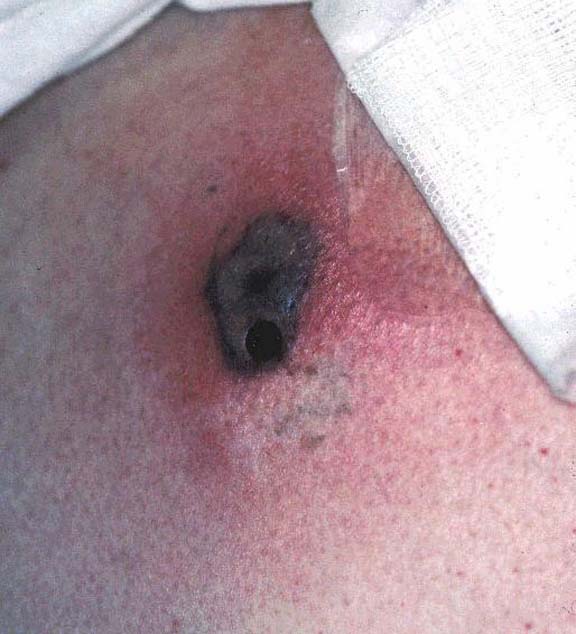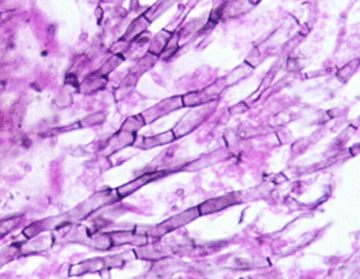Aspergillosis is a fungal infection that I occasionally encounter in my The Woodlands dermatology and Conroe dermatology offices. It is most commonly seen in immunosuppressed patients especially those with leukemia and other hematologic malignancies, and is the second most common opportunistic fungal infection after Candidiasis in this population. Aspergillus fumigatusis the most common cause of pulmonary Aspergillosis, which disseminates to the skin. As Aspergillosis has a predilection for invading blood vessels, the cutaneous lesions are usually necrotic as the fungus clogs the blood vessels in the skin leading to infarction. Primary cutaneous Aspergillosis is most commonly caused by Aspergillus flavus, and is usually seen at the sites of intravenous catheters in immunosuppressed patients. It is very important to treat primary cutaneous Aspergillosis very aggressively since it can rapidly disseminate to the internal organs. Diagnosis is through fungal culture or skin biopsy in which numerous hyphae are branching at acute angles. Voriconazole is very effective in treating Aspergillosis and may be more efficacious than even Amphotericin B.

LEARN MORE HERE
November 4, 2010




